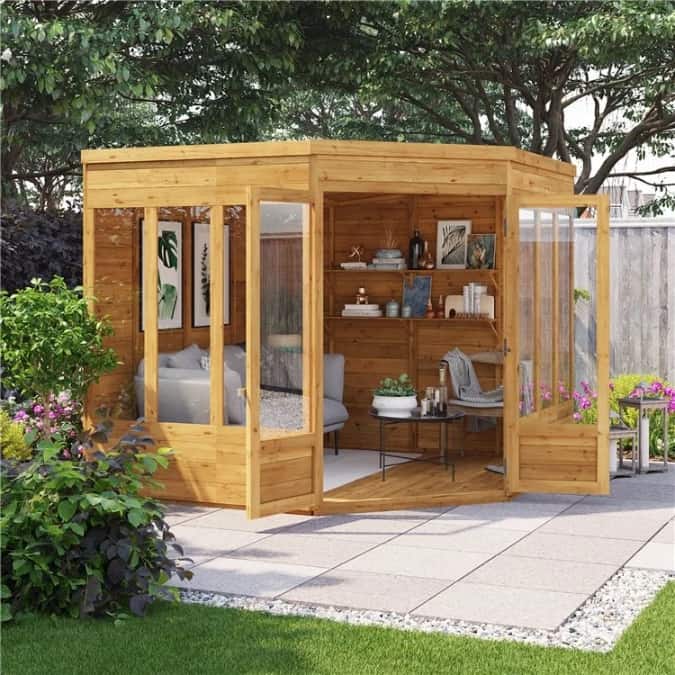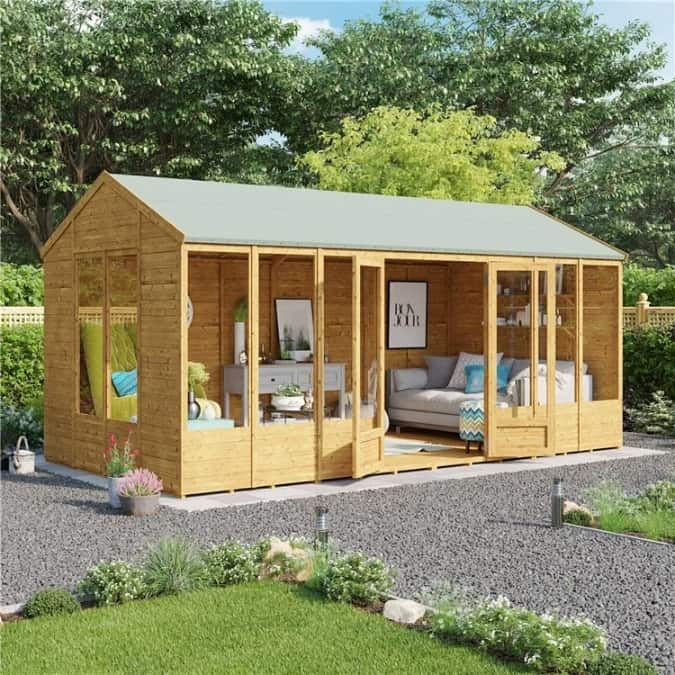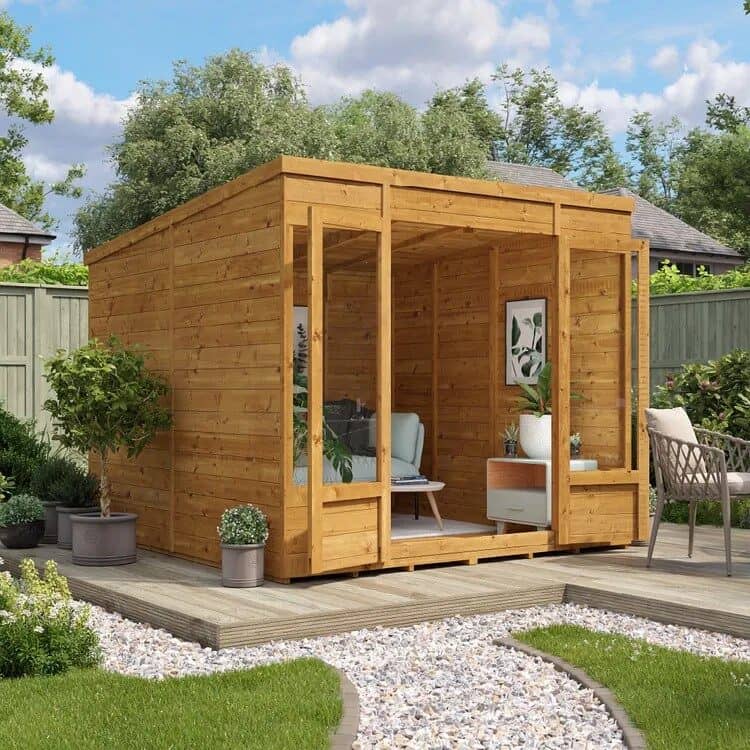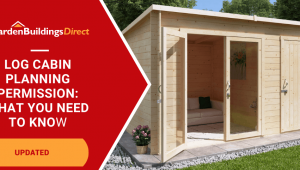Jump to:
A summer house can be many things—but for it to look the part, it needs to feel like it belongs in the garden. Let’s look at some ideas to bring your outdoor structure and space into line, shall we?
Summerhouse Landspacing Ideas: Plants, Borders & Groundwork

One of the best ways to make your summer house blend in is to use the garden itself as a frame. For example, surrounding the structure with planting schemes instantly softens the look and makes it feel at home.
A row of lavender or hydrangeas along the sides can tie the building into the border, rather than leaving it standing apart. Climbers like clematis or roses on a trellis can add vertical interest while helping the building merge with the rest of the garden.
Another easy touch is to add a few pots by the door. In summer, fill them with colourful flowers, and in winter, swap them for evergreens. Even as simple as a couple of herb pots can make the entrance look cared for and in tune with the garden.
The ground matters, too. Grass running right up to the walls can leave the summer house looking bare. A small flower bed, a strip of gravel, or paving around the base is the way to go. Alternatively, lay mulch or bark around the base. It stops weeds from spreading as well as the soil from drying out—it’s a win-win! Both also leave a clean edge, so you don’t end up with messy grass right against the walls.
If you want to go further, think about hard landscaping: a winding stone path leading to the door, decking that connects the summerhouse to the patio, or even a small water feature close by. These elements make the space more inviting and provide a natural flow into the rest of the garden.
Summer House Garden Ideas: Layout & Positioning

Treat your summer house as part of your everyday outdoor space. You should consider it close to the patio for easy meals outside, or at the far end if you like the idea of a quieter corner. Both work; it just depends on what you want out of it.
What the structure faces will also decide the view you get from inside. Point it towards the lawn, patio, or flower beds. Imagine it facing a fence or a house wall, it’ll always feel cut off and not much of a fun scene from the window.
Might as well look at ways to reposition your summer house, if needed, while you’re at it. Move it closer to a fence, hedge, or border instead. This is especially important if it sits in the middle of the lawn, looking like it’s floating. A bigger model calls for clear ground on the sides to give it breathing room.
Outdoor lighting is another way to tie the building to its surroundings. A string of festoon lights along a path, lanterns on posts, or solar uplighters around plants will make the approach more inviting and extend garden use into the evening.
Give Your Summer House Its Own Style

Your summer house probably already has a style. It could be classic timber, or maybe it’s more modern with straight lines and huge windows (and lots of them). Either way, small tweaks can go a long way in making it work with your current garden setup.
Sometimes all it takes is a fresh coat of paint to completely revamp it. You can never go wrong with greens or browns. But darker shades like charcoal or navy also work if you want the structure to stand out a bit. Here are some of the Best Colours to Paint Your Summer House for inspiration.
Small changes can also make a surprising difference. Change the window frames or add shutters for a touch of style. A bit of trim around the doors or windows also changes the look – the same goes for swapping the handles or hinges. You could update the roof finish with felt tiles, wooden shingles, or a green roofing felt, too.
If you’re considering adding a summerhouse to your garden, it’s important to find the right one that matches both your aesthetic and practical needs. Check out our Summerhouse Buying Guide to learn everything you need to know about selecting the perfect summerhouse for your garden.
Try out these ideas and see what works for your garden. And if you’re looking for options, check out our summerhouses for sale – you might find one you like!
Get more tips here: How to Use a Summer House for Outdoor Entertaining
FAQs: Summerhouse Landscaping & Garden Ideas
What plants look best around a summerhouse?
Climbers like clematis, roses, and honeysuckle soften walls. Lavender, hydrangeas, and ornamental grasses make good borders. Pots with seasonal colour keep the entrance looking fresh year-round.
What’s the best base for a summerhouse in a landscaped garden?
The most reliable option is a solid, level base such as paving slabs or a concrete pad. These provide stability, prevent movement, and protect the timber from damp. For a more natural look, you can also use a prefabricated plastic base kit, which can be filled with gravel. This type of base allows for good drainage while blending in with your garden design. Whichever you choose, make sure the site is level and well-prepared before installation.





